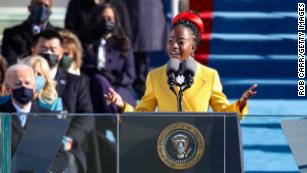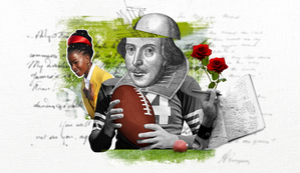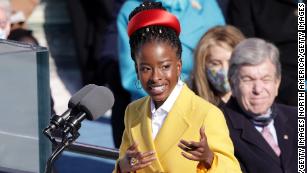How to Save a Sad, Lonely, Angry and Mean Society

Recently, while browsing in the Museum of Modern Art store in New York, I came across a tote bag with the inscription, “You are no longer the same after experiencing art.” It’s a nice sentiment, I thought, but is it true? Or to be more specific: Does consuming art, music, literature and the rest of what we call culture make you a better person?
Ages ago, Aristotle thought it did, but these days a lot of people seem to doubt it. Surveys show that Americans are abandoning cultural institutions. Since the early 2000s, fewer and fewer people say that they visit art museums and galleries, go to see plays or attend classical music concerts, opera or ballet. College students are fleeing the humanities for the computer sciences, having apparently decided that a professional leg up is more important than the state of their souls. Many professors seem to have lost faith too. They’ve become race, class and gender political activists. The ensuing curriculum is less “How does George Eliot portray marriage?” and more “Workers of the world, unite!”
And yet I don’t buy it. I confess I still cling to the old faith that culture is vastly more important than politics or some pre-professional training in algorithms and software systems. I’m convinced that consuming culture furnishes your mind with emotional knowledge and wisdom; it helps you take a richer and more meaningful view of your own experiences; it helps you understand, at least a bit, the depths of what’s going on in the people right around you.
The novelist Alice Walker lamented that she lacked models. She wasn’t aware of enough Black female writers who could serve as exemplars and inspirations as she tried to perceive her world and tell her stories. Then she found the novelist and anthropologist Zora Neale Hurston, who, decades before, had pointed the way, shown her how to see and express, enabled her to write about her mother’s life, about voodoo, the structures of authentic Black folklore. Thanks to Hurston she had a new way to see, a deeper way to connect to her own heritage.
I’d argue that we have become so sad, lonely, angry and mean as a society in part because so many people have not been taught or don’t bother practicing to enter sympathetically into the minds of their fellow human beings. We’re overpoliticized while growing increasingly undermoralized, underspiritualized, undercultured.
The alternative is to rediscover the humanist code. It is based on the idea that unless you immerse yourself in the humanities, you may never confront the most important question: How should I live my life?
Ralph Waldo Emerson, for example, argued that we consume culture to enlarge our hearts and minds. We start with the tiny circle of our own experience, but gradually we acquire more expansive ways of seeing the world. Peer pressure and convention may try to hem us in, but the humanistic mind expands outward to wider and wider circles of awareness.
I went to college at a time and in a place where many people believed that the great books, poems, paintings and pieces of music really did hold the keys to the kingdom. If you studied them carefully and thought about them deeply, they would improve your taste, your judgments, your conduct.
Our professors at the University of Chicago had sharpened their minds and renovated their hearts by learning from and arguing against books. They burned with intensity as they tried to convey what past authors and artists were trying to say.
The teachers welcomed us into a great conversation, traditions of dispute stretching back to Aeschylus, Shakespeare, George Bernard Shaw, Clifford Odets. They held up visions of excellence, people who had seen farther and deeper, such as Augustine, Sylvia Plath and Richard Wright. They introduced us to the range of moral ecologies that have been built over the centuries and come down as sets of values by which we can choose to live — stoicism, Buddhism, romanticism, rationalism, Marxism, liberalism, feminism.
The message was that all of us could improve our taste and judgment by becoming familiar with what was best — the greatest art, philosophy, literature and history. And this journey toward wisdom was a lifelong affair.
The hard sciences help us understand the natural world. The social sciences help us measure behavior patterns across populations. But culture and the liberal arts help us enter the subjective experience of particular people: how this unique individual felt; how this other one longed and suffered. We have the chance to move with them, experience the world, a bit, the way they experience it.
We know from studies by the psychologists Raymond Mar and Keith Oatley that reading literature is associated with heightened empathy skills. Deep reading, immersing yourself in novels with complex characters, engaging with stories that explore the complexity of this character’s motivations or that character’s wounds, is a training ground for understanding human variety. It empowers us to see the real people in our lives more accurately and more generously, to better understand their intentions, fears and needs, the hidden kingdom of their unconscious drives. The resulting knowledge is not factual knowledge but emotional knowledge.
The novelist Frederick Buechner once observed that not all the faces Rembrandt painted were remarkable. Some are just average-looking old people. But even the plainest face “is so remarkably seen that it forces you to see it remarkably.” We are jolted into not taking other people for granted but to sense and respect the immense depth of each human soul.
Image
Rembrandt’s “The Return of the Prodigal Son.”

Rembrandt’s “The Return of the Prodigal Son.”Credit...Fine Art Images/Heritage Images, via Getty Images
When I come across a Rembrandt in a museum, I try to train myself to see with even half of Rembrandt’s humanity. Once in St. Petersburg, I had the chance to stand face to face with one of his greatest paintings, “The Return of the Prodigal Son.” He painted this one at the end of his life, when popular taste had left him behind, his finances were in ruins, his wife and four of his five children were in their graves. I have seen other renderings of that parable, but not one in which the rebel son is so broken, fragile, pathetic, almost hairless and cast down. The father envelops the young man with a love that is patient, selfless and forbearing. Close observers note the old man’s hands. One is masculine, and protective. The other is feminine, and tender.
Though this painting is about a parable, it’s not here to teach us some didactic lesson. We are simply witnessing an emotional moment, which is about fracture and redemption, an aging artist painting a scene in which he imagines all his losses are restored. It is a painting about what it is like to finally realize your deepest yearnings — for forgiveness, safety, reconciliation, home. Meanwhile, the son’s older brother is off to the side, his face tensely rippling with a mixture of complex thoughts, which I read as rigid scorn trying to repress semiconscious shoots of fraternal tenderness.
Experiences like this help us understand ourselves in light of others — the way we are like them and the way we are different. As Toni Morrison put it: “Like Frederick Douglass talking about his grandmother, and James Baldwin talking about his father, and Simone de Beauvoir talking about her mother, these people are my access to me; they are my entrance into my own interior life.”
Experiences with great artworks deepen us in ways that are hard to describe. To have visited Chartres Cathedral or finished “The Brothers Karamazov” is not about acquiring new facts but to feel somehow elevated, enlarged, altered. In Rainer Maria Rilke’s novel “The Notebooks of Malte Laurids Brigge,” the protagonist notices that as he ages, he’s able to perceive life on a deeper level: “I am learning to see. I don’t know why it is, but everything penetrates more deeply into me and does not stop at the place where until now it always used to finish.”
Mark Edmundson teaches literature at the University of Virginia and is one of those who still lives by the humanist code. In his book “Why Read?” he describes the potential charge embedded in a great work of art: “Literature is, I believe, our best goad toward new beginnings, our best chance for what we might call secular rebirth. However much society at large despises imaginative writing, however much those supposedly committed to preserve and spread literary art may demean it, the fact remains that in literature there abide major hopes for human renovation.”
Wouldn’t you love to take a course from that guy?
How does it work? How does culture do its thing? The shortest answer is that culture teaches us how to see. “The greatest thing a human soul ever does in this world is to see something, and tell what it saw in a plain way,” the Victorian art critic John Ruskin wrote. “Hundreds of people can talk for one who can think, but thousands can think for one who can see.”
Ruskin intuited something that neuroscience has since confirmed: Perception is not a simple and straightforward act. You don’t open your eyes and ears and record the data that floods in, the way in those old cameras light was recorded on film. Instead, perception is a creative act. You take what you’ve experienced during the whole course of your life, the models you’ve stored up in your head, and you apply them to help you interpret all the ambiguous data your senses pick up, to help you discern what really matters in a situation, what you desire, what you find admirable and what you find contemptible.
Another way to put it is this: Artistic creation is the elemental human act. When they are making pictures or poems or stories, artists are constructing a complex, coherent representation of the world. That’s what all of us are doing every minute as we’re looking around. We’re all artists of a sort. The universe is a silent, colorless place. It’s just waves and particles out there. But by using our imaginations, we construct colors and sounds, tastes and stories, drama, laughter, joy and sorrow.
Works of culture make us better perceivers. We artists learn from other artists. Paintings, poems, novels and music help multiply and refine the models we use to perceive and construct reality. By attending to great perceivers, the Louis Armstrongs, the Jorge Luis Borgeses, the Jane Austens, we can more subtly understand what is going on around us and be better at expressing what we see and feel.
When you go to the Museo Reina Sofía in Madrid, you don’t just see Picasso’s “Guernica”; forever after you see war through that painting’s lenses. You see, or rather feel, the wailing mother, the screaming horse, the chaotic jumble of death and agony, and it becomes less possible to romanticize warfare. We don’t just see paintings; we see according to them.
Image
People viewing Picasso’s “Guernica.”

Picasso’s “Guernica.”Credit...Emilio Parra Doiztua for The New York Times
This process of refining and expanding our internal mental models is not a dry, purely intellectual process. If we’re lucky, and maybe only in rare moments, it can be gut-wrenching and intoxicating, a fusion of the head and the heart. As my friend Arthur Brooks writes, “Think of a time when you heard a piece of music and wanted to cry. Or recall the flutter of your heart as you stared at a delicate, uncannily lifelike sculpture. Or maybe your dizziness as you emerged from a narrow side street in an unfamiliar city and found yourself in a beautiful town square; for me, it was the Piazza San Marco in Venice, with its exquisitely preserved Renaissance architecture. Odds are, you didn’t feel as if the object of beauty was a narcotic, deadening you. Instead, it probably precipitated a visceral awakening, much like the shock from a lungful of pure oxygen after breathing smoggy air.”
In this kind of education, you are lured by beauty and deeply pierced by myths that seem primeval and strange. Once in college, I was reading Nietzsche’s “The Birth of Tragedy” in the library. I don’t know what happened next. The book, with its fevered prose and savage genius, sucked me into a trance. I eventually looked up and it was four hours later. I had traveled in time back into some primeval world of bonfires, dancing and Dionysian frenzy, and it left a residue, which I guess you would call a greater awareness of the metaphysical, the transcendent. Life can be much wilder than it seems growing up on a suburban street.
The philosopher Roger Scruton argued that this kind of education gives us the ability to experience emotions that may never happen to us directly. He wrote: “The reader of Wordsworth’s ‘Prelude’ learns how to animate the natural world with pure hopes of his own; the spectator of Rembrandt’s ‘Night Watch’ learns of the pride of corporations, and the benign sadness of civic life; the listener to Mozart’s ‘Jupiter’ symphony is presented with the open floodgates of human joy and creativity; the reader of Proust is led through the enchanted world of childhood and made to understand the uncanny prophecy of our later griefs which those days of joy contain.”
Your way of perceiving the world becomes your way of being in the world. If your eyes have been trained to see, even just a bit, by the way Leo Tolstoy saw, if your heart can feel as deeply as a K.D. Lang song, if you understand people with as much complexity as Shakespeare did, then you will have enhanced the way you live your life.
Attention is a moral act. The key to becoming a better person, Iris Murdoch wrote, is to be able to cast a “just and loving attention” on others. It’s to shed the self-serving way of looking at the world and to see things as they really are. We can, Murdoch argued, grow by looking. Culture gives us an education in how to attend.
The best of the arts are moral without moralizing. Dostoyevsky’s “Crime and Punishment” is an inquiry into the knowledge of right and wrong, told through the eyes of one who suffers, with all the pity and sorrow that involves.
The best of the arts induce humility. In our normal shopping mall life, the consumer is king. The crucial question is, do I like this or not? But we approach great art in a posture of humility and reverence. What does this have to teach me? What was this other human being truly seeking?
Image
A man observing a large painting on a wall in a museum.

The San Fernando Royal Academy of Fine Arts Museum in Spain.Credit...Emilio Parra Doiztua for The New York Times
One of my heroes is Samuel Johnson, the essayist, playwright, poet, dictionary compiler, one of the greatest critics of all time. He was something of a mess as a young man — lazy, envious, unreliable. Over the decades, he read, wrote and felt his way to greatness. He read with astounding sensitivity. Once at age 9 he was reading “Hamlet” when he came to the ghost scene. He was so terrified he ran to the front door so that he could look out at the people in the street, just to remind himself that he was still in the land of the living.
He wrote biographies of his moral exemplars. He wrote essays, poems and plays about the great works of the Western tradition, and especially about his own sins as if he were trying to beat it out of himself through the scourge of self-examination. (Johnson had a special weakness for envy, and so dozens of his essays in his periodicals mention the sin of envy.) His awareness of human depravity led to humility, self-restraint and redemption. And it worked. By the end of his life he was lavishly generous, a man who had the ability to see the world with absolute honesty and sympathetic perception. Johnson socialized with artists and statesmen, but he invited society’s outcasts to live with him so that he could feed and offer them shelter — a former slave, a doctor who treated the poor, a blind poet. One night he found a woman, most likely a prostitute, lying ill and exhausted on the street. He put her on his back and brought her home to join the others. Johnson was a somewhat tortured Christian. These radical moments of welcome are the essential Gospel-like acts.
When he died, his eulogist observed that he left a chasm in national life that nothing could fill up. He embodied that old humanist ideal. He had become a person of taste, a person of judgment, a person of culture. He died a wonderful man.
https://www.nytimes.com/2024/01/25/opin ... 778d3e6de3










































































